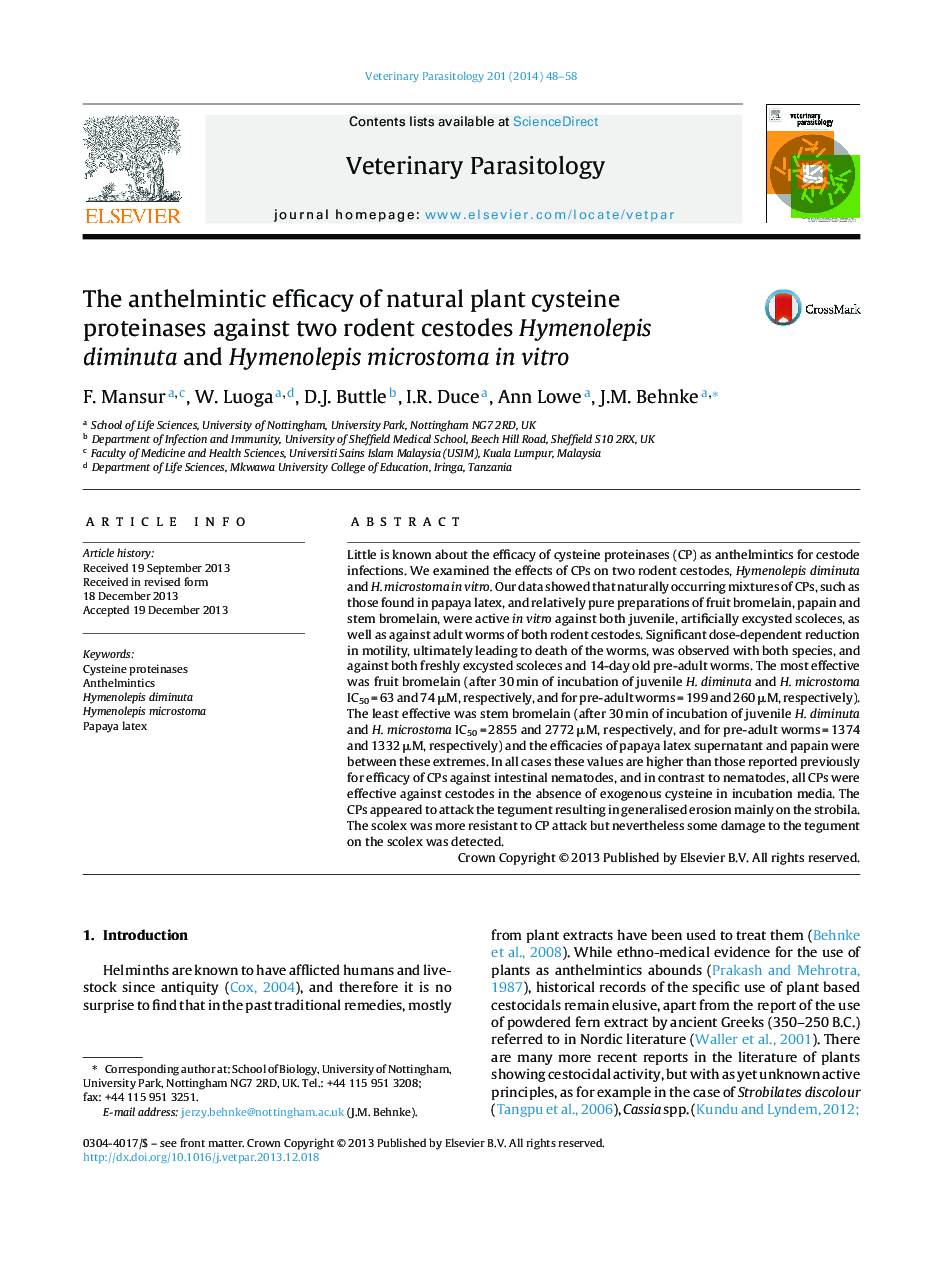| Article ID | Journal | Published Year | Pages | File Type |
|---|---|---|---|---|
| 5803290 | Veterinary Parasitology | 2014 | 11 Pages |
Little is known about the efficacy of cysteine proteinases (CP) as anthelmintics for cestode infections. We examined the effects of CPs on two rodent cestodes, Hymenolepis diminuta and H. microstoma in vitro. Our data showed that naturally occurring mixtures of CPs, such as those found in papaya latex, and relatively pure preparations of fruit bromelain, papain and stem bromelain, were active in vitro against both juvenile, artificially excysted scoleces, as well as against adult worms of both rodent cestodes. Significant dose-dependent reduction in motility, ultimately leading to death of the worms, was observed with both species, and against both freshly excysted scoleces and 14-day old pre-adult worms. The most effective was fruit bromelain (after 30 min of incubation of juvenile H. diminuta and H. microstoma IC50 = 63 and 74 μM, respectively, and for pre-adult worms = 199 and 260 μM, respectively). The least effective was stem bromelain (after 30 min of incubation of juvenile H. diminuta and H. microstoma IC50 = 2855 and 2772 μM, respectively, and for pre-adult worms = 1374 and 1332 μM, respectively) and the efficacies of papaya latex supernatant and papain were between these extremes. In all cases these values are higher than those reported previously for efficacy of CPs against intestinal nematodes, and in contrast to nematodes, all CPs were effective against cestodes in the absence of exogenous cysteine in incubation media. The CPs appeared to attack the tegument resulting in generalised erosion mainly on the strobila. The scolex was more resistant to CP attack but nevertheless some damage to the tegument on the scolex was detected.
